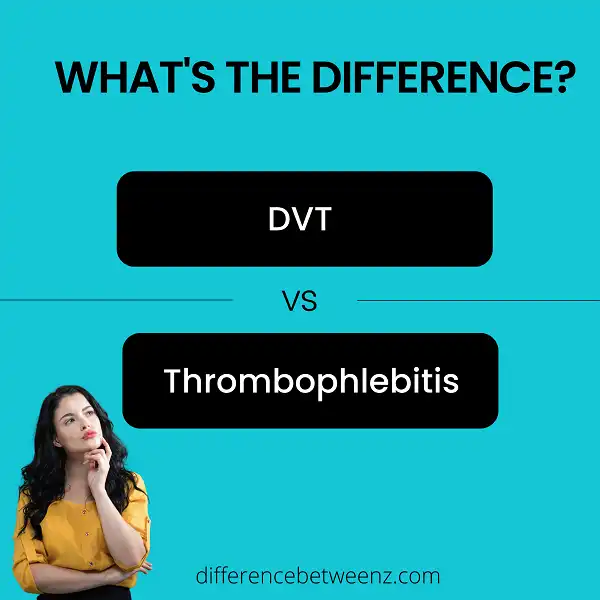DVT and thrombophlebitis are both blood clots that can form in the veins, but they are different conditions. DVT is a more serious condition, and it can cause serious health problems if not treated. Thrombophlebitis is a less serious condition, and it usually resolves without any treatment. It’s important to know the difference between these conditions, so you can get the right treatment if you develop one of them.
What is DVT?
DVT, or Deep Vein Thrombosis, is a condition in which a blood clot forms in a deep vein, usually in the leg. DVT can cause pain and swelling in the affected area and can lead to serious complications if the clot breaks loose and travels to the lungs, causing a pulmonary embolism. DVT is most commonly diagnosed in people over the age of 60, and those who have had surgery or been immobilized for an extended period of time. Treatment for DVT typically involves anticoagulant medication to prevent the clot from getting bigger, and physical therapy to help improve circulation. In severe cases, surgery may be necessary to remove the clot. DVT is a serious condition that should be treated by a medical professional as soon as possible.
What is Thrombophlebitis?
Thrombophlebitis is a condition that involves the formation of a blood clot in a vein. The clot can occur in an arm or leg and can cause swelling, redness, and pain. Thrombophlebitis can be caused by a variety of things, including injury to the vein, inflammation, or infection. In some cases, it may also be caused by a blockage in the vein. Thrombophlebitis is usually treated with anti-inflammatory medications or blood thinners. In some cases, surgery may also be necessary to remove the clot.
Difference between DVT and Thrombophlebitis
DVT (deep vein thrombosis) is a blood clot that forms in the deep veins of your body, usually in your legs. DVT can cause pain and swell in the affected area. DVT can also break loose and travel to your lungs (pulmonary embolism), which can be life-threatening. Thrombophlebitis is a blood clot that forms in a superficial vein (a vein near the surface of your skin). Thrombophlebitis usually causes pain and swelling in the affected area. DVT is more serious than thrombophlebitis because DVT can break loose and travel to your lungs (pulmonary embolism). If you have symptoms of DVT or thrombophlebitis, see your doctor right away. Early diagnosis and treatment can prevent serious complications.
Conclusion
Although the two conditions are often confused, they are different. DVT is a blood clot that forms in a vein, usually in the leg. Thrombophlebitis is an inflammation of the veins caused by a blood clot. If you have any questions about whether or not you may be experiencing one of these conditions, please speak with your doctor.


